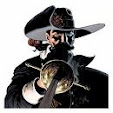Spain brought and shared its culture, language and creed. With them, it contributed values and principles that had laid the foundations of institutions such as the School of Salamanca, composed of jurists, academics and members of religious orders.
Part of Castilian law was transplanted to America, where it was in force for centuries. Also, laws protecting the natives were gradually added, which are in the Compilation of the Laws of the Kingdoms of the Indies, published by order of King Charles II of Spain in 1681. The Hispanic Monarchy always intended to integrate the natives into Spanish society. It was an inclusive colonization and Spanish law, clearly and absolutely, assured sedentary Indians property rights over the land they occupied (phrase of California Senator John Charles Frémont, said in 1850).The laws protected the natives. The mission system was used to integrate them into Hispanic society. This system had social, economic and political objectives in addition to teaching the Catholic religion. Missionaries provided the natives with tools, such as trades and technologies, that would allow them to live in peace in a modern, sedentary society as subjects of the King of Spain.
In United States territory, the California missions - which Friar Junípero Serra was the first to found - and those of New Mexico achieved remarkable success. Other attempts, such as those made with the Apaches, barely had any results. A well-known case is that of the mission of San Sabá, built in 1758 near present-day Menard (Texas) and razed to the ground a few months later by Taowayas, Comanches, Wichita, Caddos and other enemies of the Apaches. Also in Texas, five missions were founded around San Antonio. They were the first buildings built in stone in this state and are UNESCO-declared world heritage sites. One of them, San Antonio Valero Mission, founded in 1718 by Friar Antonio de Olivares, is better known as The Alamo for the battle that took place there in 1836.

|
| Mission San Antonio Valero, The Alamo. |
The American territories were provinces of the Hispanic Monarchy, on equal legal footing as the rest of the Empire. Hence the interest in achieving a degree of cultural unification, which nevertheless respected many indigenous uses and customs. The expansion of Spanish was not something imposed, but a practical matter as it was a lingua franca that enabled communication throughout an entire continent, from California to Patagonia.
The Spanish introduced horses, cattle, sheep, pigs and poultry into the United States. Horses did not arrive from the East Coast; they came from the south, from the heart of the Viceroyalty of New Spain. To a much lesser extent, they also arrived through Florida. Horses changed Native American lives and history. Horses enabled them to transport more things, to move faster and farther, to hunt more, and to have superiority in war over other indigenous groups that had none or fewer of them. Often, these animals were also a source of food. Many escaped and reproduced freely in large numbers, giving rise to herds of wild horses known as mesteños, or mustangs. The term mesteño, which means “having no expressly recognized owner,” comes from the old Spanish institution of La Mesta, which communally managed herds of cattle.

|
| Arrival and Spread of Horses in North America. |

|
| Marsh cows, ancestors of longhorns. Watercolour by José A. Sencianes Ortega. |
Other arrivals included coins used as a means of payment in commercial exchanges, writing, the printing press, and the construction and urban planning techniques of cities such as Santa Fe or San Antonio.
Actions by the Crown to improve the lives of its subjects included the campaign of free vaccinations against smallpox. Known as the Royal Philanthropic Vaccine Expedition, or Balmis-Salvany Expedition, it took place between 1803 and 1812. King Charles IV of Spain, whose family had suffered the ravages of the disease, supported the proposal by Doctor Francisco Javier Balmis to take Edward Jenner’s recent discovery to the inhabitants of the entire Monarchy. In addition, the so-called Vaccination Boards would be organized so that the process reached absolutely everywhere. In California, Arizona, New Mexico and Texas, the vaccine was administered both to the children of Spaniards and to those of all the sedentary and nomadic indigenous tribes who accepted it, such as the Navajo and the Comanche. This expedition was the first mass global vaccination campaign in history.

|
| The merchant corvette María Pita arrives in San Juan de Puerto Rico with smallpox vaccine. Painting by Carlos Parrilla Penagos. |
Regulations were enacted for the better operation of the presidios. A line of them was established almost along the present border between Mexico and the United States to defend the northern Viceroyalty of New Spain from the incursions of Apaches, Comanches and other hostile tribes.
Text extracted and adapted from The Hispanic Roots of the United States by courtesy of Asociación Cultural Héroes de Cavite.









.jpg)

No hay comentarios:
Publicar un comentario